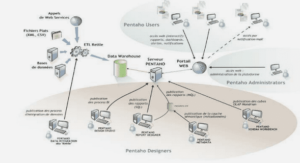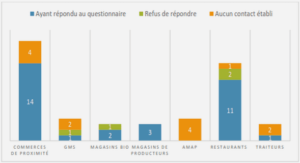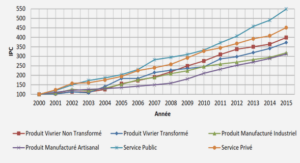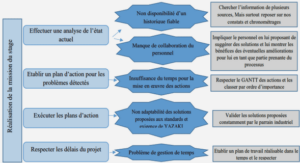Language of Place-Making
The Rodeo
Corb Lund grew up around the rodeo. His grandfathers, parents, and uncles were all very active in the rodeo community in southern Alberta, not only as competitors, but as judges, coaches, and, of course, as spectators of the sport as well. His father was also an important voice in the discussion of humane treatment of livestock in rodeo competition. The Lund and Ivins families are both very well respected within the southern Alberta’s rodeo community, and several relatives have been honoured by local rodeos and the Canadian Professional Rodeo Association. Needless to say, with so many talented cowboys and cowgirls surrounding him, the singer-songwriter’s had ample inspiration for his rodeo songs. Two of the songs analyzed here, “We Used to Ride ‘Em” and “Buckin’ Horse Rider” offer reflections about his father’s and uncle Lynn Jensen’s careers as bronc riders, while also tying in important cultural motifs that highlight the important relationship between the cowboy and his horse. Both of these songs address issues surrounding aging and retirement, offering nostalgic reflections for the good old days. Lund was himself a rodeo competitor in his youth, participating in the steer riding and steer wrestling events at local rodeos and even the Calgary Stampede. However, after a steer stomped on his head,Lund left the sport. It was also around this time that Lund became captivated by the music of Black Sabbath, an experience that he regularly notes as a turning point in his youth (Lund 2009b). In “Steer Rider’s Blues” Lund shares his rodeo history, reminiscing about his early teen years as a young steer rider. Although Lund may not compete in the rodeo today, he maintains a significant presence as an invited performer at numerous local rodeos, notably the Calgary Stampede.
This chapter examines Lund’s rodeo songs and considers how he uses rodeo cowboy motifs to tie his family heritage to southern Alberta. While previous chapters have 138 explored his family’s deep connection to the land and ranching industry, this chapter will focus on the integral role that they play in local rodeo culture and traditions. As such, I will consider the rodeo theme in relation to the dissertation’s general perspective of place. That said, I will also refer to Michael Allen’s (2005) work on the “Cowboy Code” to interrogate the ways in which Lund draws on and adapts cowboy motifs to tell his stories and address emotions surrounding complex issues including aging, retirement, and nostalgia. In two of the songs analyzed in this chapter, Lund’s narrative revolves around the activities of an unnamed protagonist, and he draws on external references to tie the stories to his family members. In so doing, his narratives are often constructed in a manner that allows the individual to stand as a symbol for the entire family’s connection to the rodeo. The musical setting offers yet another layer of meaning in each of these songs; through musical analysis, I will show how Lund draws on older musical styles and rhythms that mimic the sound of a galloping horse or bull to impart identity to the featured animals. It will also consider how the use of non-traditional harmonies and power chords aid in communicating the emotional response to the sport, capturing sentiments such as loss, longing, determination, and even eagerness. All of these song narratives are deeply tied to place. This chapter will therefore discuss the ways in which Lund’s music anchors his family’s story in local traditions, mythologizing their place within southern Alberta’s community and rodeo culture.
Rodeo Culture and Country Music
Like the image of the singing cowboy, the rodeo cowboy holds a prominent place within country music culture. Even though the rodeo has not been a dominant theme in country music (Allen 1998, 132), a large body of songs has been written and recorded over the last 125 years that have not only defined elements of the profession and lifestyle, but also provided a lens into the cultural and behavioural codes of the rodeo cowboy. Rodeo activities were a component of the working cowboy tradition, and the roping and bucking events prominent in contemporary rodeos were once informal competitions amongst cowboys looking to pass time while herding cattle on the range (discussed below) (Foran 2008, 1-20). These informal competitions inspired the rodeo song subtheme of the cowboy song, and just as the ranching cowboy wrote about his life on the open range, so too did they write songs about “bronc busters,” the type of cowboy skilled and talented enough to ride and subdue wild horses (and later, bulls) (Allen 1998, 134). One of the first poems/songs in this tradition is “Bucking Bronco” (author unknown), which celebrates the bronc buster for both his skill at taming horses, as well as for his prowess with women. Many of these early songs (“Bucking Bronco” included) were often bawdy in nature, and activities like riding and bucking, or objects like a gun and saddle, were invoked in a manner suggestive of sexual activity (Westermeier 1976, 93). As rodeo song historian Michael Allen has noted, the roots of the rodeo cowboy and rodeo songs lie in the very same poetry and cultural codes as the North American cowboy (i.e. the singing cowboy tradition). Thus, in addition to describing the practical side to the activity and sport, many rodeo songs display an understanding of the orally transmitted “Cowboy Code” that defines cowboy culture in general. As Allen (2005, 277) notes, nineteenth century cowboys adhered to (and passed down) an orally transmitted set of values and traditions, a “Cowboy Code,” which resembled the Turnerian “frontier” thesis, which argued that democracy in the USA was a product of the westward settlement—away from the hierarchy, aristocracies, religious establishments and intrusive governments of Europe toward a life of freedom and individuality. Cowboys were bound by the code, according to Allen (2005, 277); they demonstrated not just a love of nature and animals (horses in particular), strength, courage, humour, musicality, adaptability, and nomadism, but they also exhibited loyalty to their boss, and were hospitable toward other cowboys.
The Code, like the “frontier” thesis, however, included qualities such as violence and antiintellectualism (a by-product of their general distrust toward authority and government). This Code transferred from ranching to rodeo culture (Lawrence 1984, 129), and has routinely been invoked in song narratives where traditional rodeo cowboy motifs are used as a metaphor for deeper and complex questions about the individual in society, and the meaning of life.
|
Table des matières
Introduction
0.1 Corb Lund, A Biographic Sketch
0.2 Presentation of the Research Project
0.3 Literature Review
0.3.1 Country Music Literature
0.3.2 Cultural and Human Geography
0.3.3 Rap and Hip-Hop Studies
0.3.4 Ecomusicology
0.4 Objectives and Research Questions
Chapter 1. Theory and Method
1.1 Theoretical Framework
1.1.1 Genre
1.1.2 Identity Levels in Popular Music Performance
1.1.3 Sense of Place
1.1.4 “Geo-Cultural” Identity
1.1.5 Language of Place-Making
1.1.6 Music and Place/Space
1.2 Method
1.2.1 Corpus
1.2.2 Analytic Approach
1.3 Chapter Outline
Chapter 2. Landscape and Environment
2.1. Country Music, Landscape, and Environment
2.2 Alberta’s Diverse Landscape
2.3 Southern Alberta’s Climate
2.3.1 The Chinook Wind
2.3.2 Precipitation and Flooding
2.4 Summary
Chapter 3. Ranching and Veterinary Medicine
3.1 Country Music and Agriculture
3.2 A History of Ranching in Alberta
3.3 Lund’s Ranching Songs
3.4 Veterinary Medicine
3.5 Summary.
Chapter 4. The Rodeo
4.1 Rodeo Culture and Country Music
4.2 History of the Rodeo in Alberta
4.2.1 The Calgary Stampede
4.2.2 Rodeo as an “Invented Tradition”
4.2.3 Lund and Ivins Family and the Rodeo
4.3 Lund’s Rodeo Songs
4.3.1 Rodeo as Metaphor
4.3.2 Rodeo and Nostalgia
4.3.3 Lund’s Rodeo Story
4.3.4 Constructing Local Mythologies
4.4 Summary
Chapter 5. Fossil Fuel Energy Industry
5.1 Country Music and the Fossil Fuel Energy Industry
5.2 Alberta’s Fossil Fuel Energy Industry
5.2.1 The Oil Sands
5.2.2 Coal Bed Methane
5.2.3 Environmental Activism
5.3 Lund’s Musical Response
5.3.1 Lund’s Shifting Narratives
5.3.2 Anticipating the Fuel Shortage Apocalypse
5.3.3 Looking toward the Future
5.4 Summary
Chapter 6. Rural and Urban Spaces
6.1 Rural and Urban Spaces in Country Music
6.2 Alberta’s Rural and Urban Spaces
6.3 Lund’s Alberta
6.3.1 Urban Sprawl and Rural Conservation Issues
6.3.2 City versus Country: Exploring Broken Relationships
6.4 Summary
Conclusions: “Geo-Cultural” Identity
7.1 Country Music’s “Hurtin’ Albertan”: Defining “Geo-Cultural” Identity
7.1.1 Genre
7.1.2 Levels of Artistic Identity
7.1.3 “Geo-Cultural” Identity
7.2 Methodological Considerations and Further Research
7.3 Final Thoughts
Reference List
Discography
![]() Télécharger le rapport complet
Télécharger le rapport complet




